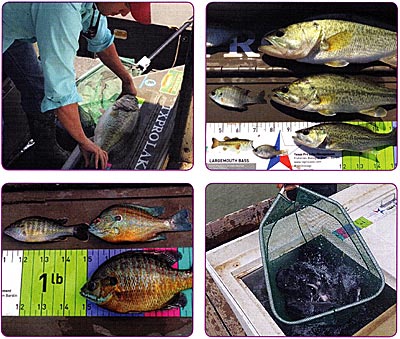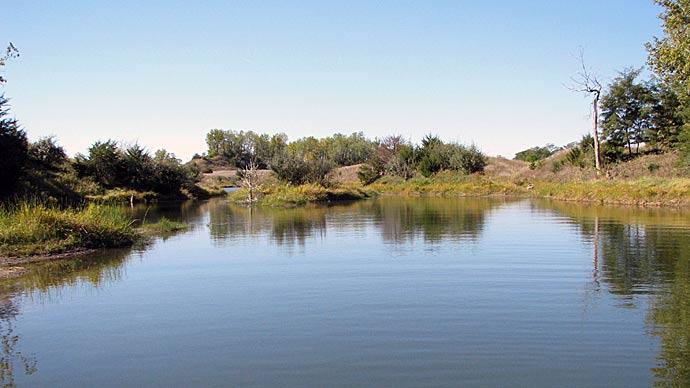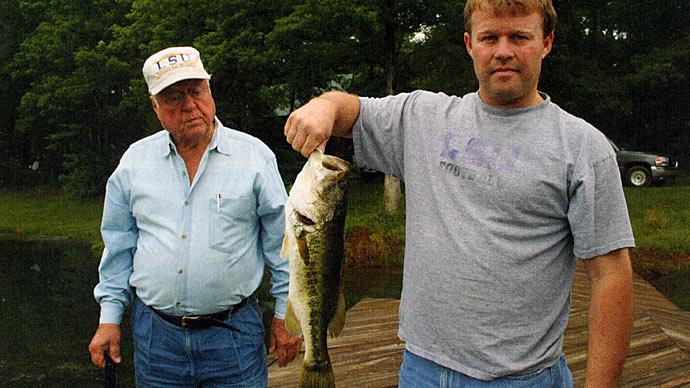
You've heard the old adage, "If you don't plan to succeed, you plan to fail." While this phrase is trite, it's often true in the pond management business. At best, some people are lucky to have a healthy pond. At worst, that dream pond could be a moss-infested mudhole chock full of trash fish.
Here are some tips to create a successful pond plan.
First, define your goals. You've read this statement in these pages for years. For example, we have a family who just closed on a property less than an hour from the city. It already has an existing four-acre pond, and looking at topographical maps of that 180-acre tract, it looks like there are a couple of nice places to build a pond or small lake.
The family's goals are to learn the property and get that four-acre pond ready for everyone to enjoy next summer. That means good fishing, a dock, and a place to build a cabin. For the pond, the kids expect to swim in it, too. For specific goals, good fishing means a growing fishery with healthy bass and panfish.
Next, learn and summarize the history of that pond. When was it built? Has it been stocked? Have there been any management practices in the past? For our living example, the new owners asked to have a meeting with the people who sold them the land. They learned their new favorite pond was built in 1999 with two purposes in mind—to be used as a fishing pond and to increase property value. The seller's family had young, active kids, and bought the land as an investment.
They spent a little bit of money so they'd have a campsite and fun place to catch a few fish. A small pavilion with a fire pit next to the pond was their gathering place. It was a nice site and offered a place to park their travel trailer. The seller's kids were now grown and gone, with little interest in coming out to enjoy the property anymore. The pond had been stocked in the beginning with recommended numbers of catfish, bluegills, and bass, which were bought off a fish truck at the nearby feed store. Oh, and he remembered a fish kill back in 2012, during the height of a drought. The big mat of cattails in the upper end had been there for more than ten years. There had been no management—no feeding of fish, no harvest rules, fertilization, evaluations, or anything of the sort. The sellers just built it, put some fish in it, and enjoyed it for a few years. They'd had quite a few fish fries and grease spots dotted the concrete pavilion floor.
Next, plan to determine what you have, and evaluate the pond and its inhabitants. Water quality and chemistry are important, and so are the physical aspects of that pond. Was it built properly? Is the dam in good shape? Slopes good?
For our four-acre example, it was a good idea to map the lake bottom. A bathymetry map calculates surface area size, water volume, depths, and contours—and with today's side scan technology, habitat can be evaluated as well. That's important. As goes the habitat, so goes what lives in it. If all you have is some riprap on the dam and several shallow areas loaded with dense mats of pondweeds, is that the best habitat for your goals? In our example, the shoreline was grown up most of the way around, but slopes were such that it wouldn't be hard to clean it up and make it totally accessible.
While that part of your due diligence is going on, evaluate the dam and spillway. No sense spending much money on the fishery if the spillway is highly eroded and about to burst.
As you focus on the physical pieces of this puzzle, take a look at the fishery, too. Should you hire a pro to electrofish and further sample the fish population? Or, do you have the tools, skills, and knowledge to make this part a family project? Plan to identify all the different species, size classes, and body condition of the fish population. The more you know, the better decisions you can make.
Determining what you have is critical. When goals are sharply focused, a starting point is important to creating a workable game plan.
In the case study here, the family decided to have a professional evaluate the lake last fall, before the of fifteen feet. The fishery was a reflection of habitat, with very few forage fish and heavily crowded bass in the 12-14" size class. Actually, the biologist aged a dozen of those bass to find out they averaged five years of age. That's too old for much long-term success. The land-owners had to decide if they wanted aggressive management or choose to be happy with these fish and limited growth potential. They chose to have the pro remove more than 150 bass during that survey, which makes room for young fish to fill the new population gap. Plus, by decreasing predator numbers, stocking adult bluegill will help establish a food chain.
After determining what you have, the next step is to look at issues and limitations. Are there trash fish or so much shallow water that aquatic plants could be a problem? Is the water chemistry good, or do you need to amend it? Plan to review these parameters regularly, especially if conditions are ripe for plant growth or for the water quality to degrade.
Identify any excess or unused resources. In our example, the lake needed habitat in a serious sort of way. The watershed was loaded with invasive cedar trees. The family plans to buy a bare pontoon boat with a flat deck, and use it for a swimming deck and work boat. They want to cut cedars and make brush piles in water six to eight feet deep. That's a good call, as long as they understand those cedars won't last longer than seven or eight years under water. They also plan to buy and add some commercial fish habitat as time and money permits.
As your plan develops it is time to put together action items. For our example, the action plan involves manipulating the fish population, stocking some fish, adding considerable amounts of habitat over the winter, and then making plans to improve fish productivity via a feeding program and keeping the water fertile next spring and early summer. Plus, they plan to keep catch records, manicure the shoreline, eat some bass, and build a beach.
The last part of creating a successful pond plan is to come up with a timeline to evaluate your goals, based on what's working and what isn't. That timeline could be based on a budget, or it could be a reflection of how much time you expect it to take to reach those goals. One big point that landowners tend to often overlook is what to do once those initial goals are reached. That's when it's important to develop a maintenance plan or make new goals. There's not a pond on the earth that will sit still once you get it as you want it. It's always changing, developing, and adjusting to what's offered. That's how the pond in our example became what it is. It developed into an overcrowded bass lake with an overeaten food chain. The best thing that could have happened to it might have been that drought when some of the fish died—but there were enough fish left to repopulate and then overpopulate with bass.
Define your goals. Find out and summarize the history. Determine what you have, then define current issues and what issues you expect to occur. Look for opportunities your pond may offer, and look for its excesses or untapped resources. Put your action items together, and then execute a plan that follows a reasonable timeline in which to accomplish your goals, based on your expectations and budget. At that point, take stock and analyze your progress— and be prepared to reevaluate your goals to keep moving forward.
If you'll do that, success is much more likely, and you'll avoid many of the frustrations and annoyances too many people have to face. You'll enjoy those waters for a long time to come.
Reprinted with permission from Pond Boss Magazine



